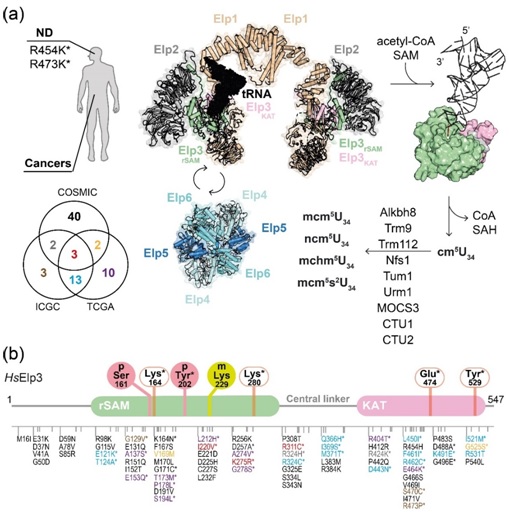Last November scientists from Glatt lab compiled together the latest advances on Elongator protein 3 (Elp3) and its acetyl-transferase activity. The aim of Abbassi et al.’s review was to explain more clearly the relationship between Elongator and Acetyl-CoA.
This work, coordinated by Dr. Ting-yu Lin, describes in the first part the different kind of acetyltransferases that we know of today. Then, with the help of our resident chemist Dr. Anna Biela, this paper describes how unique the acetylation performed by Elongator is, compared to more conventional acetyltransferases. More precisely, Elp3 can modify tRNAs while its cousins modify exclusively proteins or peptides.
The relation between mutations and diseases was given great space in the review since the impact of an Elongator dysfunction can be strong on the health of cells. Cancers are predictably the first type of disease that arises in a case of Elongator disorder. The review however also presents how Neurodegenerative Disorders can arise when Elp3 is mutated. Other Elongator subunit’s disease-leading mutations are also referred to as (dis)honorable mention.
Overall this work, polished by Dr. Sebastian Glatt’s input, is a great source of information for newcomers to the acetyltransferases and Elongator field to understand what makes Elp3 so special.
Link to the publication – https://www.mdpi.com/1422-0067/21/21/8209/htm
